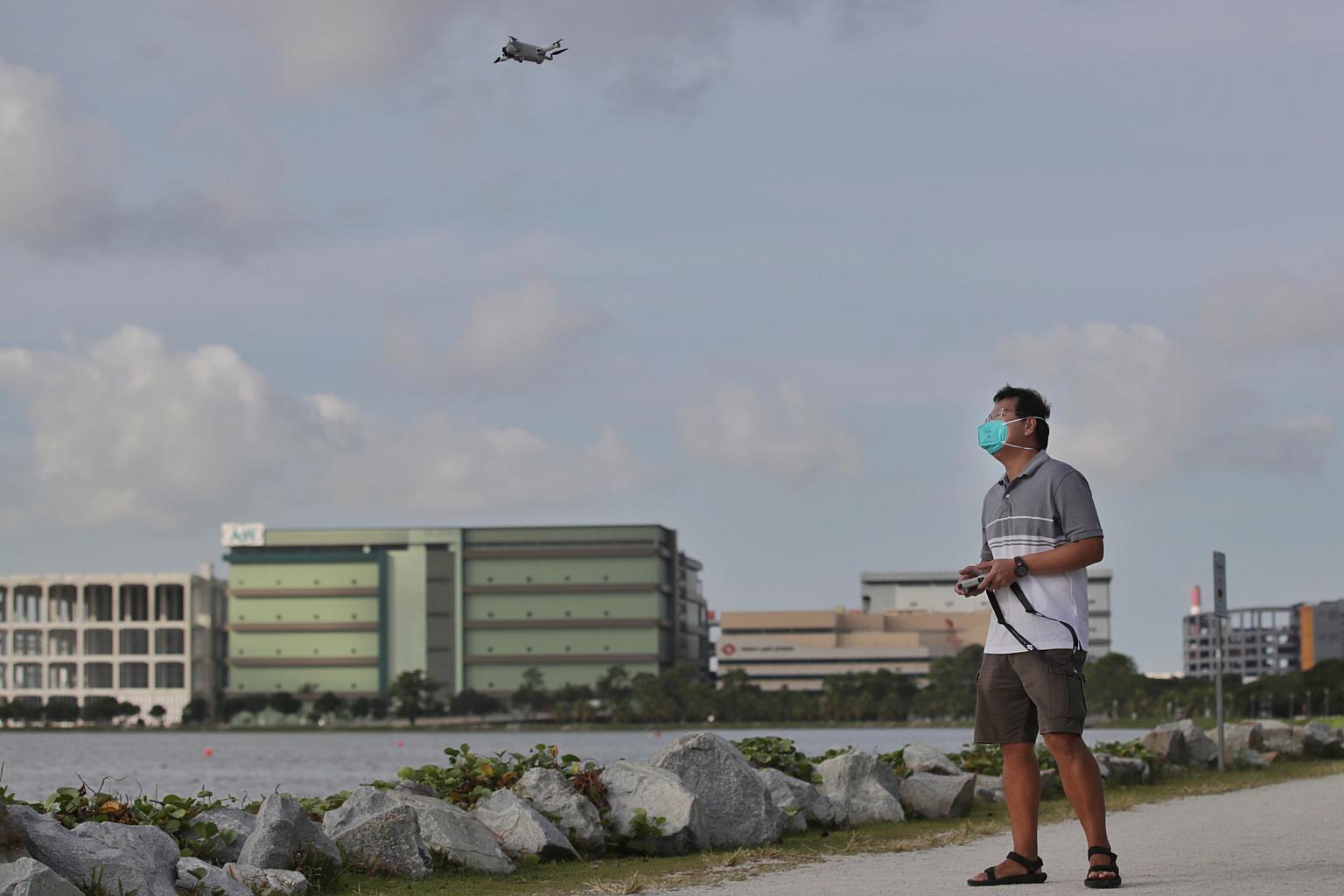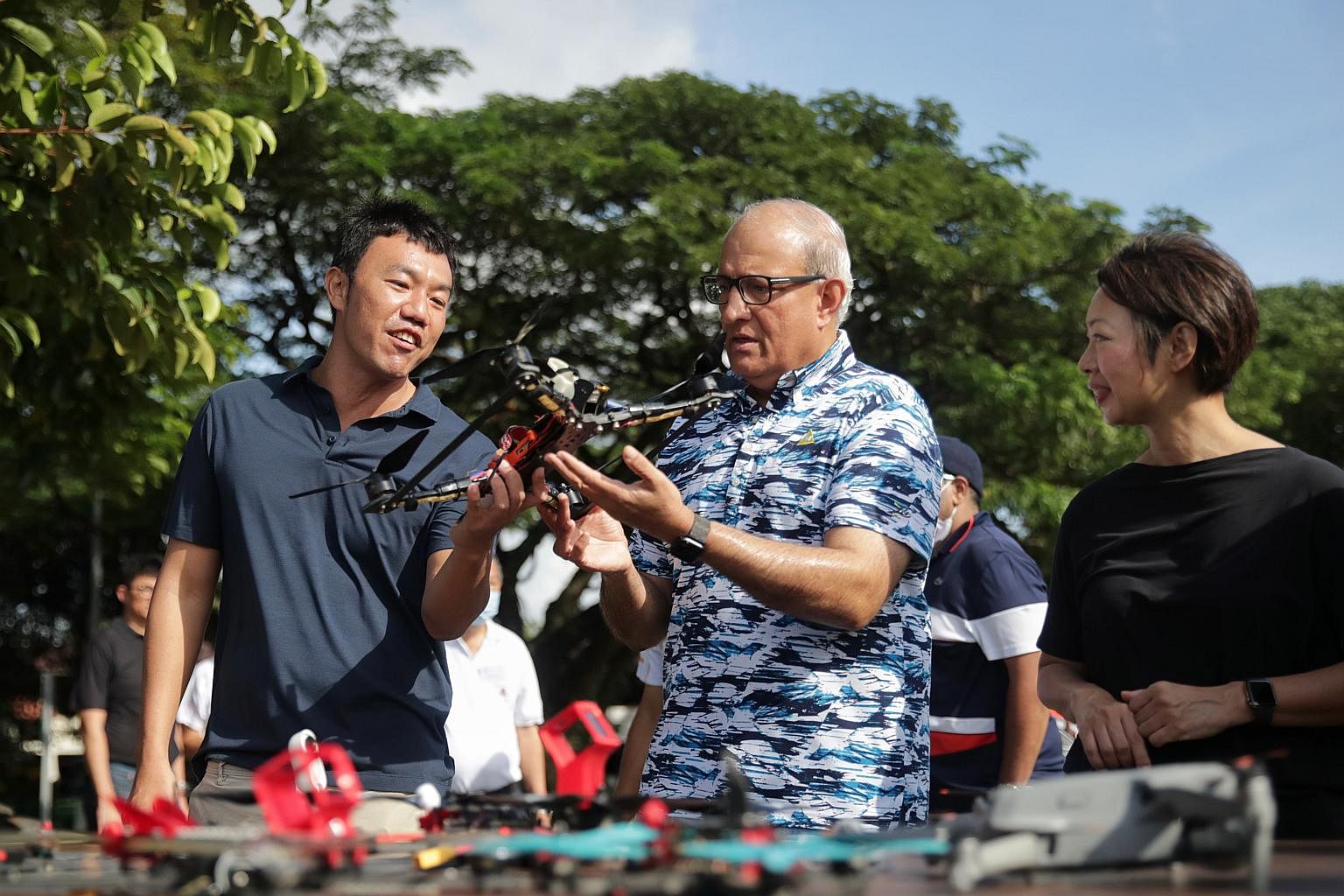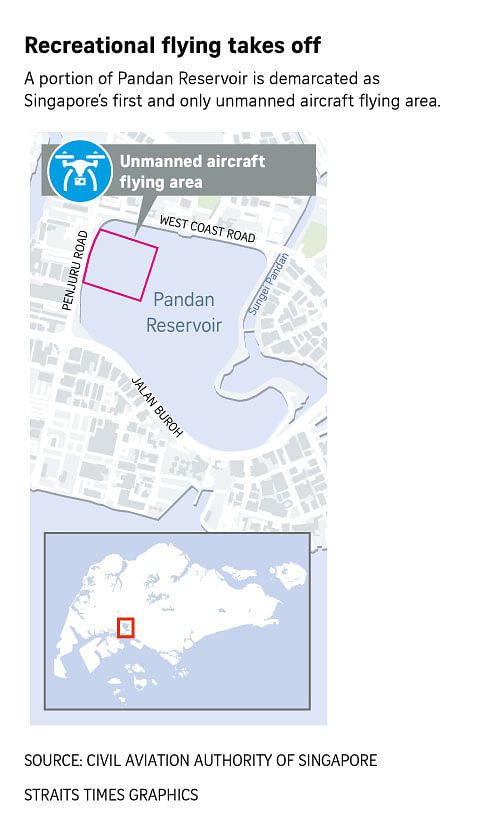Area over Pandan Reservoir designated for recreational flying of unmanned aircraft
Sign up now: Get ST's newsletters delivered to your inbox

The 16ha dedicated flying area aims to accommodate hobbyists' needs while ensuring public and aviation safety.
ST PHOTO: GIN TAY
Michelle Ng, Michelle Ng
Follow topic:
SINGAPORE - Unmanned aircraft enthusiasts will now be able to fly their drones recreationally at Singapore’s first and only designated flying area at Pandan Reservoir, in a pilot that will run till January 2023.
Those who fly registered drones no heavier than 25kg and below 60m above mean sea level will not need to apply for an activity permit.
The 16ha dedicated flying area aims to accommodate hobbyists' needs while ensuring public and aviation safety, even as more people pick up recreational flying in recent years, said Transport Minister S. Iswaran at the launch event on Sunday (July 17).
"There's a very strong uptick in the activity level in the unmanned aircraft community in Singapore and we see recreational use rising significantly," said Mr Iswaran, noting that the number of registered unmanned aircraft in Singapore has increased fourfold.
"A flying area that is aviation-safe and safe for the public is an important consideration for us, especially in a place like Singapore, where our living environment is quite dense. We want to be able to accommodate a diversity of activities but also want to make sure they're done in a safe manner," he said.
Examples of unmanned aircraft include drones, radio-controlled aircraft and remote-controlled kites.
At the flying area over the Pandan Reservoir, unmanned aircraft users will still have to adhere to prevailing rules set by the Civil Aviation Authority of Singapore (CAAS).
This includes not flying an unmanned aircraft higher than 60m above mean sea level. Any unmanned aircraft with a total weight above 250g also must be registered with CAAS before users are allowed to operate it.
As at June 30, there are 16,095 registered unmanned aircraft.
Permits are still required for those who fly an unmanned aircraft above 25kg and those who do non-recreational flying.
CAAS said that more than 80 per cent of registered unmanned aircraft weigh between 250g and 1.5kg.
The boundary of the flying area over the Pandan Reservoir waters is marked with yellow buoys and is at least 400m away from the nearest housing blocks for privacy reasons.
Users have to take off and land their unmanned aircraft within a grassy area demarcated by yellow standing flags.
Basic amenities such as tables and benches are provided for people to set up their aircraft in a semi-shaded area.
The CAAS said that previously, those who wanted to set up their unmanned aircraft had to do so on the grass patch, which is difficult to do, especially when the ground is wet.
Regular programmes and community workshops to educate unmanned aircraft enthusiasts on safe and responsible flying will held at the area, said CAAS.
The flying area came as a key recommendation by the Unmanned Aircraft Systems Advisory Panel set up in 2019, with the aim of reviewing and enhancing Singapore's unmanned aircraft systems regulatory framework.
The operating hours for the flying area at Pandan Reservoir are from 9am to 6pm daily.
The Pandan Reservoir unmanned aircraft flying area community chat on Telegram, UA Flying Areas, is open to the public to join and receive regular updates and important notices about the site.

Mr Iswaran said the pilot site will be used to assess the response from the unmanned aircraft community and the general acceptance of nearby residents and the public at large.
"As we gain experience and broader acceptance, we can see how this can be extended to the open areas. But it's important that we first get this going, succeeding and meeting the needs and expectations of all stakeholders," he said.
Generally, enthusiasts can fly their unmanned aircraft recreationally in open areas that are within permitted flying areas and outside of strict no-flying zones.
They have to adhere to the rules and regulations, such as applying for an activity permit where necessary and the limits to the unmanned aircraft's weight and flying height.

Mr Iswaran said while the number of offences has risen in tandem with the increased interest in recreational unmanned aircraft flying, the bulk of the offences were committed due to the lack of understanding, or awareness, of the rules.
"This is more so than because of any malicious intent," he said, adding that the rise in offences emphasises the importance of educating users and helping them comply with the rules to promote safe and responsible flying.
CAAS said it has taken 49 enforcement actions for non-compliance with unmanned aircraft systems regulations from July 1 last year to June 30 this year.
An advantage of having a designated flying area is the ecosystem it provides, said Mr Iswaran.
"Here, you have the hobbyists, associations, CAAS and other stakeholders involved in the activity and promote a safe flying culture. This will help us better appreciate how it can evolve in Singapore," he said.

